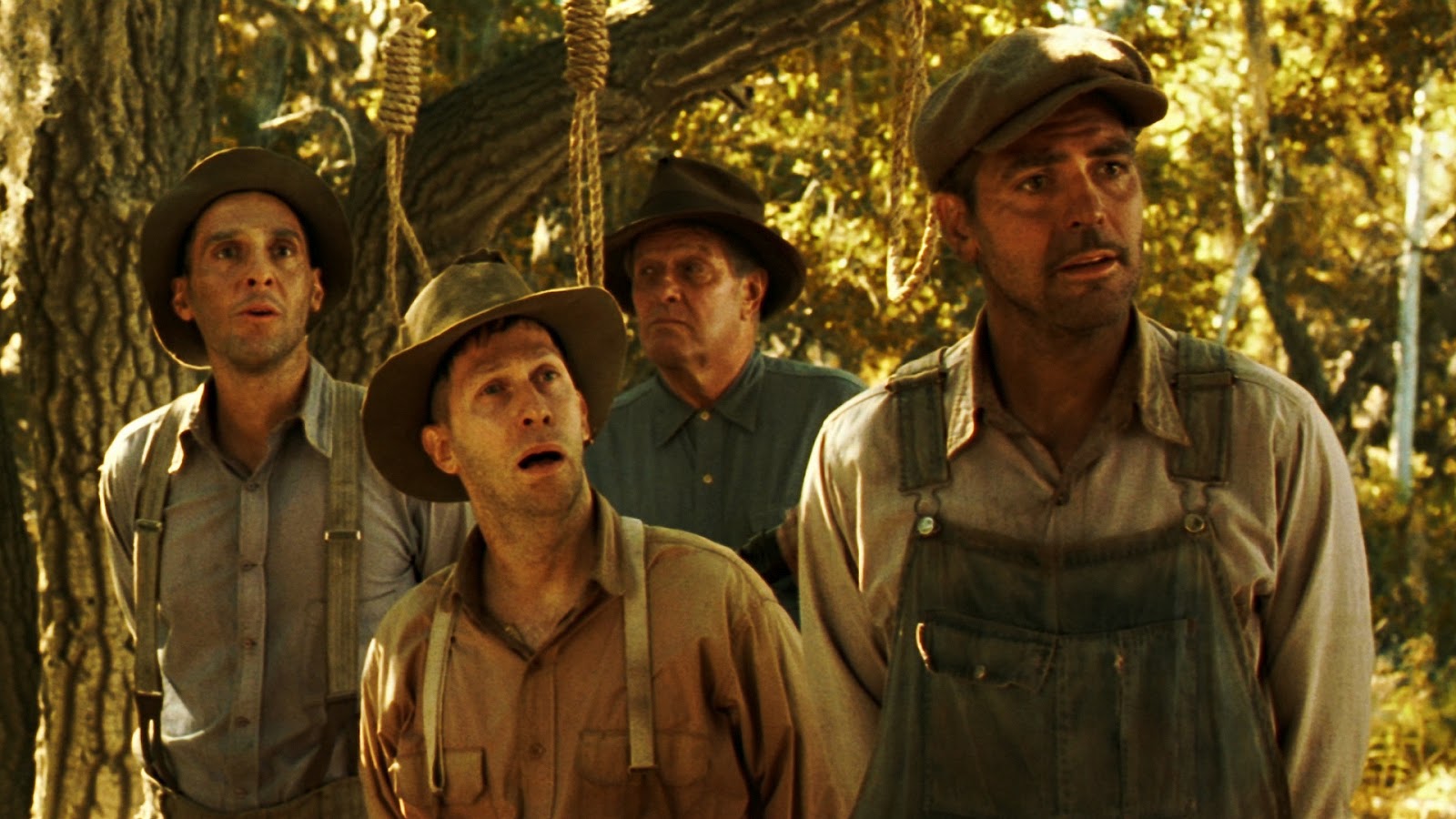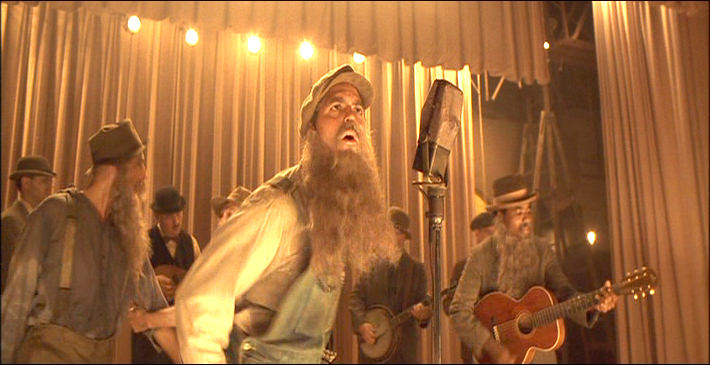Released in 2000, O Brother, Where Art Thou? is a
comedy-historical-drama starring Geroge Clooney, John Turturro and Tim Blake
Nelson. The story follows three escaped convicts traversing the Deep South
during the Great Depression in search of a hidden treasure. Along the way, they
encounter a number of strange characters and episodes before revealing that the
treasure was a hoax created by the ‘leader’ Ulysses Everett McGill to get back
to his wife, who is soon to be remarried. Jonathan Romney of The Guardian described O Brother,
Where Art Thou on three levels: "a tale of three desperadoes on the
lam in rural Mississippi; a blues and country musical; and, allegedly at least,
a rewrite of Homer's Odyssey".[1]
On the other hand, Nick Rynerson on The
Gospel Coalition blog described the film as “a portrait of Christian
salvation … [and] the human longing for redemption” (Though he notes that the
former maybe unintentional and vice-versa for the latter).[2]
The film works as it presents a number of different levels of reading depending
on one’s own faith and their reactions to the influences of different figures.
O Brother could be read as a cry out for faith in modern society,
as represented by the ending which sees the trio saved by a “miracle” after
Everett (George Clooney) prays to God to be saved from being executed by the
lawmen that have been chasing them. Indeed, these elements play a great part in
O Brother but I would argue an
analysis can go beyond a Christian allegory and more into a crisis of faith,
questioning its part in modern society. I argue that O Brother presents a balanced look at its role both in old values
of America (as represented by Pete (John Turturro), Delmar (Tim Blake Nelson)
and the Deep South setting against the modern ways of Everett (George Clooney),
further personified by his love for hairwax, a mass-consumerist item indicative
of the modern age. For Pete and Delmar, religion offers a chance to redeem themselves for their past-crimes. Just as Pete and Delmar are influenced by religion, Everett
is influenced by calls of the modern consumer world (something the other two appear to
have no interest in). Whether the ending of O
Brother, Where Art Thou can be read as a Christian allegory for redemption,
what is clear is the Coen’s desire to represent the Deep South in the 1930s as a
place where progress is slow. In fact, the Coen show the polar opposite end of religious
faith through their depiction of the Ku Klux Klan, performing an almost
ritualistic murder of Tommy Johnson. Religious faith is represented as both as
a unifying force in this setting that can also have ultimately destructive
force. With the character of Everett, the Coens seek to question religious
faith in modern society.
This look at ‘faith’ can also be
extended to the politics of the period, where the candidates for election come
across as snake-oil merchants (make of the modern-day allegory as you will). The
candidates search for any kind of manipulative stance to ‘sell’ themselves to
the masses. In fact, the ‘band’ (The Soggy Bottom Boys) the boys inadvertently put
together takes on a form higher than their initial intentions. They are able to,
unintentionally, influence the mass of the Deep South, helping to inspire and
change discourse on their own politics. A scene in which Delmar thinks Pete has
been transformed into a toad highlights that superstitions still hold weight in
this setting. Finally, Everett is motivated by his faith in his wife. The whole
drive of the story revolves around him trying to reach back to his wife and
restore her faith in him. The film ultimately highlights that human-beings
fundamentally need to believe in something – religion, politics, monetary gain,
artistic pursuits, romantic pursuits etc. The film highlights people can
influence the thoughts and lifestyles of an entire community, whether through
lies, manipulation or in faith.
Overall, with some of these
notions in mind, O Brother is a
seemingly light film for the Coens. It moves in an episodic fashion as the boys
trip up from one scenario to the next. However, I think there is greater depth
here than some people give it credit for. It remains a seemingly underrated
film in the Coen canon that helps to highlight their incredible skills as
technicians and also at dealing with characters and settings. The use of
digital colour grading is a stroke of genius. As an example of technology used
in an intelligent way to enhance the story-telling, it helps to give the film a
dusty, sepia-toned look which of course helps to establish this desolate, often
threatening, but also nostalgic landscape. Through subtle comedy and character
interaction, O Brother is an offbeat
comedy which seeks to explore (but not answer) notions of faith, religion and
the influence of authority figures.
Rating: 8/10
[1] Jonathan
Romney, ‘Double vision’, http://www.theguardian.com/film/2000/may/19/culture.features
[2] Nick Rynerson, ‘Metanarrative and Redemption in Film: O Brother Where Art Thou?’
http://thegospelcoalition.org/blogs/trevinwax/2012/07/05/metanarrative-and-redemption-in-film-o-brother-where-art-thou/




No comments:
Post a Comment